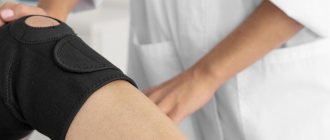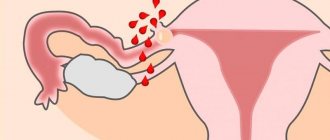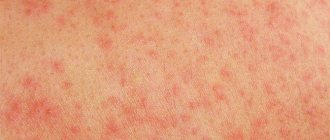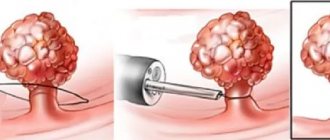Menstruation has haunted women at all times. Both in the Middle Ages, when there was no running hot water, and in antiquity. Against this background, the first modern, widely available menstrual hygiene products appeared quite recently - in 1918.
Since then, a lot has changed: synthetic ones have been added to natural materials, adhesive strips and “wings” have been added to pads, and tampons have acquired a variety of sizes and lost applicators. Everything to make their use more comfortable.
But since the 1980s, the United States began to notice a strong increase in the number of cases of toxic shock syndrome - several women who used tampons died. Subsequent studies have failed to find a link between tampons and TSS, but this factor is the main factor in the question “which is better than tampons or pads for menstruation?”
The choice between a tampon and a pad is difficult for many girls. Having different advantages and disadvantages, these products do not mix well and are most useful in different situations. Let's figure out what is better and whether such a question is appropriate.
Tampon
A tampon is a small cylinder usually made of viscose and cotton. It is inserted into the vagina using an applicator or finger and absorbs menstrual flow from the inside.
A tampon may be useful because:
- Likely convenience.
A correctly selected and installed tampon cannot be felt. It won't fall out, get lost, come off, and most likely won't leak. The tampon is changed once every 8 hours or after filling with liquid, which is also very convenient. - You can swim.
The fact that you should not go into water during menstruation is just a myth, but there is a rational grain in it. During this period, the cervical canal is expanded and this is enough for bacteria, microorganisms or chlorine, if it is a swimming pool, to enter the uterus. A tampon will prevent trouble from happening and help you avoid illness. - Hidden method of hygiene.
With a tampon, it is not a problem to wear a tight-fitting or open outfit - its outline will not be visible and the problem of a tampon leaking, if selected correctly, is lower than the probability of a pad leaking. And it doesn’t smell while it’s inside, since it doesn’t come into contact with air. - Virgins can. “The hymen will break” is also a myth. It has an opening large enough to insert a tampon and is very stretchable. Also, the tampon is quite soft and it is almost impossible to damage anything with it, not to mention the fact that “virginity” is a social concept, not a physiological one.
There are also disadvantages to using tampons:
- May cause discomfort.
Manufacturers and instructions for tampons say unequivocally: inserting and removing a tampon should not cause any inconvenience and certainly no pain. But the body is individual and unpleasant sensations may arise. - Cannot be used for infectious diseases.
Some gynecologists draw girls' attention to the fact that during periods of inflammation or infection, stagnant discharge can be a favorable environment for the development of bacteria, fungi and microorganisms. - If you're squeamish, it won't work.
Not everyone may be comfortable inserting and removing a tampon by hand. But if for the first there are tampons with applicators, then for the second auxiliary tools have not yet been invented. - As a rule, you cannot sleep with him.
In a dream, there is no way to track how full the tampon is and whether it is time to change it. Moreover, you should not use a tampon if your sleep lasts longer than the maximum period for changing a tampon - 8 hours. - Toxic shock syndrome.
This rare complication occurs 3-4 times per 100,000 people, but is very dangerous. It occurs due to infection and proliferation of streptococci or staphylococci, which produce toxins. 50% of TSS cases occur after the use of tampons and are potentially fatal.
The variety of tampons is huge: different sizes, absorbency, with or without an applicator, and even with a special sliding coating. Finding ones that are convenient for you is just a matter of number of attempts. The main selection criterion is absorption. Its level may vary and is marked on the packaging in the form of “drops”. Each drop adds 3 milliliters to the tampon's maximum absorption capacity.
Individual choice
Surely every girl will agree that menstruation is an unpleasant and inconvenient phenomenon. But still, this is a signal that the lady is healthy, is of reproductive age and is not currently carrying a child under her heart. If your periods disappear, then pregnancy is the only joyful diagnosis possible. In other cases, this is a signal of illness or gradual decline of the reproductive function of the fair sex. So any girl takes menstruation for granted. She has the power to make these days as comfortable as possible through the chosen hygiene products. At this time, you should often shower and wash your genitals, rest more and, if possible, get enough sleep. Most women choose pads to absorb menstrual blood because of their ease of use, availability and lack of contraindications. But gaskets have significant disadvantages. First of all, this is the risk of leakage. It also has an unpleasant odor that can be noticeable after just a couple of hours of use. And we must not forget that pads can be noticeable under tight-fitting clothes, so during your period you will have to forget about tight trousers and miniskirts. Because of these factors, girls are increasingly “switching” to sanitary tampons during menstruation. Is there any benefit or harm behind this choice? It's worth looking into.
Pad
A pad is a pad made of a polyethylene base, an absorbent inner layer and an upper permeable layer. It is attached to underwear with an adhesive strip and collects secretions, fitting tightly to the perineum.
The gasket is useful if:
- Heavy periods.
There are times when there is so much discharge that even the most absorbent tampon cannot cope with it. Then you can use the intended pad or duplicate the wicking system using both products. - The tampon causes discomfort.
“Unpleasant sensations” also include psychological discomfort. If finding a foreign object in the vagina seems unpleasant, do not force yourself. - Are you going to sleep?
Unlike tampons, the pad is not inside the body and can be used for longer than 8 hours. For better protection in a supine position, special “night” pads are produced that are large in size. - There is an inflammatory process going on.
Although the pad can become a home for bacteria, it is easily and quickly replaced with a clean one, that is, it does not contribute to the spread and strengthening of the infection.
The disadvantages of the application are not so obvious. The gasket is bad if:
- Afraid of the sight of blood.
Some girls, however, may be bothered by the sight of their own blood on a used pad. Moreover, it will be unpleasant to carry out the necessary manipulations to change it. - There will be no place to change.
The pad should be changed every 3-4 hours and if there is no place during the day where this could be done, it is worth using a longer wearing product. - You smell an unpleasant odor.
The blood on the pad is constantly in contact with air and decomposes, oxidizing. Because of this, there may be a specific odor associated with poor hygiene. - Take care of the environment.
Pads, like any other hygienic material that comes into contact with blood, must be disposed of in a special way, that is, burned at a temperature of 800 C°. Since this does not happen, the gasket, which is partially made of plastic, will take hundreds of years to decompose, polluting the environment.
The absorbency of pads is determined by their thickness and size. The larger these parameters are, the more the gasket absorbs liquids. But it is worth remembering that the large possible volume does not allow you to change the gasket less often. Regardless of how full it is, it must be changed after 3-4 hours.
Taking care of the female anatomy
Towards the end of the 1940s, Dr. Judith Esser Mitta and her husband Kyle Lucerini began developing the world's first tampon without an applicator, which had to be inserted into the vagina with fingers. Soon, doctors Karl Hahn and Hein Mittag launched mass production of such tampons. Thus, women all over the world have a choice when purchasing this hygiene product. Almost forty years later, the question has arisen about how much harm tampons cause to women due to cases of toxic shock syndrome.
How to choose between pads and tampons
Both pads and tampons primarily differ in the amount of secretions they absorb. Due to the area of the pad, this volume is larger and due to the inclusion of special polymers, which turn into a gel when wetted, they absorb better. But if there are no other reasons to refuse a particular product, you should first determine how much menstrual blood is released during the wearing period.
You can use a pad for this purpose: weigh it before use and after a change or after 4 hours. The data obtained will help you choose both a tampon and a pad and understand whether a tampon can be used at all.
The main thing in selection is internal comfort. Hygiene products are as accessible as possible, allowing you to try many options. The search may take a lot of time, but it will allow you to choose the optimal remedy.
A little history
Speaking about the harm of tampons for women, we need to delve into the past. Then it will become obvious that ladies have been using tampons during their periods for thousands of years. The oldest handwritten medical document, the Ebers Papyrus, describes soft papyrus tampons used by women in ancient Egypt as early as the 15th century BC. Representatives of the fair sex in Rome preferred woolen tampons. It's a little scary to imagine how problematic it was to use them. In Ancient Japan, paper analogues with a bandage were in use. They changed up to 12 times a day. In the Hawaiian Islands, tree ferns were used, and in some areas of Asia and Africa, herbs and moss are still used today as hygiene products.
Russian ethnographer with German roots Jacob Lindenau wrote that Koryak women “put moss tampons between their legs,” taking the example of Ostyak and Tunguska ladies. Such “tampons” were burned every morning, and during heavy menstruation, two or three times a day.
Which is better: tampons or pads?
There is no definite answer to this question - everything is very individual. It's like comparing butter with 72.5% fat and butter with 82.5% fat: there is almost no difference, but everyone has their own preferences.
Hygiene products have not been around for very long, and researchers are yet to find out what is safer. For health, at the moment, both options are considered harmless. Each woman determines what is more convenient for herself, based only on personal feelings. Doctors have differing opinions on the issue: some say that tampons are extremely harmful, while others advise using them.
For those who do not accept disposable hygiene products for one reason or another, there are alternative methods. For example, menstrual cups or reusable cloth pads.
Modern remedy
Almost as it is now, the tampon has been used since the 18th century, when it was used to treat wounds. The first modern version with applicator tubes was patented by doctors Earl Haas and Michael Dahn. Later, Gertrud Tendrich bought the patent rights, and in 1933 she began selling this product. As tampon production increased, Tendrich hired promoters to promote the products in pharmacies in Colorado and Wyoming. She also recruited nurses to give lectures on the benefits of this remedy. They talked in detail about the benefits and harms of tampons for women during menstruation. Back then, such frankness in discussing such a sensitive topic was new.
Just in case
If you have already used tampons and have not felt any signs of illness, then it is too early to relax. Remember simple preventive measures and then you will not know the harm of tampons. For example, take a break from using these products, alternating them with pads at least every two cycles. It would be good to alternate hygiene products even during one menstruation, for example, use pads at night and tampons during the day. Always select tampons with an appropriate flow rate and change them every four hours. If you feel discomfort after insertion, then you need a tampon with a lesser degree of absorption.
Kinds
Externally, the absorbent product resembles a cylinder - at one end it is rounded, while at the other it has a thread attached, which helps to remove the tampon from the vagina. Regardless of the purpose, the material used is pressed natural fibers that can perfectly absorb liquids.
Classification:
- By structure:
- with applicator;
- without applicator.
- By purpose:
- hygienic;
- medicinal;
- contraceptives.
- By ability to absorb:
- mini – for scanty discharge;
- norm – for daytime moderate discharge;
- super – for heavy, night-time discharge.
Choosing a sanitary product can cause particular difficulties, especially if a girl decides to resort to this protection option for the first time during menstruation. It is recommended to consult a gynecologist who, after an examination, will select the optimal tampon size, taking into account the individual characteristics of the vagina and the location of the cervix.
If a girl is embarrassed to see a doctor, she can get advice from a sales consultant, but she will take responsibility for the wrong purchase.
Minuses
Still, there are a number of disadvantages and inconveniences when using these hygiene products. So, tampons need to be changed regularly to prevent the development of infection. Otherwise, there will be serious harm to tampons during menstruation. These products can also dry out the mucous membrane inside the vagina and even cause an allergic reaction. It is not recommended to use tampons at night, as bacteria can actively develop during this time. Due to the need for frequent changes, tampons are more expensive than pads. Another disadvantage will be the limitation in use if there is inflammation of the genital organs.
Worth considering
There are also other recommendations from experts that will make the process of using these hygiene products more convenient. To protect against leakage, you can use “daily bags” in tandem with tampons. This way you will be sure that your laundry is clean, because with tampons you can forget about your delicate condition. It is also not recommended to regularly use tampons exclusively. Still, the constant presence of absorbent material inside is not very good for the body. On days of scanty discharge, you can get by with pads. Gynecologists do not recommend using these hygiene products for very young girls without sexual experience. Are tampons harmful to virgins? There are no strict restrictions as such, but a tampon can still damage the hymen.
Dangerous TSS
So, why is the notorious toxic shock syndrome so scary? And why can tampons cause it? The harm to health in this case is caused by a staphylococcal infection, which is rapidly progressing and difficult to treat. As a result, in 8-16% of cases everything can be fatal. This syndrome occurs quite rarely, but all tampon manufacturers are required to warn women about this possibility in their instructions. Young women under 30 may be at risk. The disease is caused by Staphylococcus aureus, which belongs to the group of saprophytic bacteria that produce toxins dangerous to humans. These bacteria live on the mucous membranes and skin, although in very modest quantities. In many people, the immune system is able to neutralize the toxic effects of these toxins. But if there are too many of them in the body, then an infection develops. At the initial stage it resembles the flu, but it progresses too quickly. A woman needs to urgently call a doctor and be sure to remove the tampon if the manifestation of symptoms is ahead of all imaginable norms. Treatment is carried out only in a hospital using antibacterial drugs and solutions.










